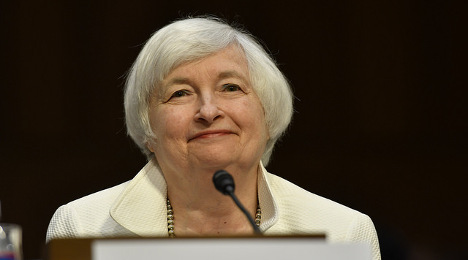Subprime population drops to lowest point in a decade

Federal Reserve chair Janet Yellen appeared at hearings this week hosted by the House Financial Services Committee as well as the Senate Banking Committee. (Photo courtesy of the Federal Reserve)
By subscribing, you agree to receive communications from Auto Remarketing and our partners in accordance with our Privacy Policy. We may share your information with select partners and sponsors who may contact you about their products and services. You may unsubscribe at any time.
SAN JOSE, Calif., and WASHINGTON, D.C. –
While Federal Reserve chair Janet Yellen made her semiannual visit to Capitol Hill this week and shared her thoughts on how much interest rates might rise, FICO highlighted how the auto finance customer population that often is charged the highest APR — subprime buyers — dwindled to the lowest level in more than a decade.
FICO confirmed to SubPrime Auto Finance News that the share of U.S. adults with credit scores considered to be subprime — registering below 600 — fell to 20.7 percent in April, representing the sixth month in a row of year-over-year declines. Ethan Dornhelm, the senior director, scores and analytics at FICO, explained that the latest reading is the lowest since at least 2005; that’s when the firm began to track this metric.
“I would characterize the decrease in percent of consumers scoring below 600 as a fairly steady trend since bottoming out in 2010; although it does seem to have accelerated a bit in the last few years,” Dornhelm said.
FICO found that the percentage of U.S. consumers with a score below 600 peaked at 25.5 percent twice in 2010 as analysts spotted the reading in both of their April and October snapshots from that year.
Dornhelm then touched on the elements FICO attributed to the prolonged decline in the amount of U.S. adults who fall into the subprime category.
“Some key drivers are likely the steady improvement of the economy and housing market since the bottoming out of the economy in 2009-2010,” he said. “Better economy equals more financial stability which equals more consumers paying their bills on time, managing responsible levels of indebtedness which in turn leads to higher FICO scores.
Subscribe to Auto Remarketing to stay informed and stay ahead.
By subscribing, you agree to receive communications from Auto Remarketing and our partners in accordance with our Privacy Policy. We may share your information with select partners and sponsors who may contact you about their products and services. You may unsubscribe at any time.
“Other factors at play include lower interest rates, which in turn reduces consumers’ monthly debt burden,” Dornhelm went on to say.
And speaking on interest rates, they were part of the economic components mentioned by Yellen during her prepared testimony to both the House Financial Services Committee as well as the Senate Banking Committee.
Yellen told lawmakers that the Federal Open Market Committee (FOMC) continues to anticipate that economic conditions will improve further and that the economy will evolve in a manner that will warrant only gradual increases in the federal funds rate.
“In addition, the committee expects that the federal funds rate is likely to remain, for some time, below the levels that are expected to prevail in the longer run because headwinds — which include restraint on U.S. economic activity from economic and financial developments abroad, subdued household formation, and meager productivity growth — mean that the interest rate needed to keep the economy operating near its potential is low by historical standards,” Yellen said.
“If these headwinds slowly fade over time, as the committee expects, then gradual increases in the federal funds rate are likely to be needed,” she continued.
“In line with that view, most FOMC participants, based on their projections prepared for the June meeting, anticipate that values for the federal funds rate of less than 1 percent at the end of this year and less than 2 percent at the end of next year will be consistent with their assessment of appropriate monetary policy,” Yellen went on to say.
Yellen also acknowledged that the economic outlook is “uncertain,” in an attempt to quantify the interest rate forecast she just shared.
“Monetary policy is by no means on a preset course and FOMC participants' projections for the federal funds rate are not a predetermined plan for future policy,” Yellen said. “The actual path of the federal funds rate will depend on economic and financial developments and their implications for the outlook and associated risks.
“Stronger growth or a more rapid increase in inflation than the committee currently anticipates would likely make it appropriate to raise the federal funds rate more quickly,” she continued.
“Conversely, if the economy were to disappoint, a lower path of the federal funds rate would be appropriate,” Yellen added. “We are committed to our dual objectives, and we will adjust policy as appropriate to foster financial conditions consistent with their attainment over time.”


